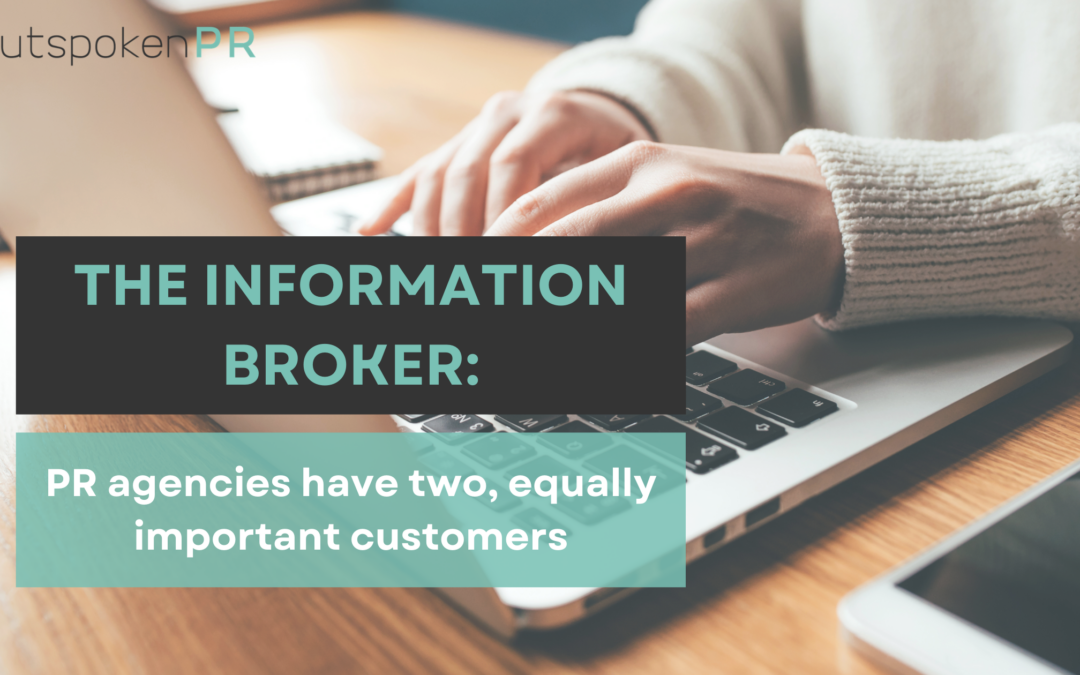The Information Broker:
PR agencies have two, equally important customers
The longer I work in PR, the more time spent explaining how important my journalist contacts are to me to clients tots up. It’s funny really because, to a degree, that is exactly what you are hiring me for; my ability to get the attention of the media for your business.
While the agency’s primary responsibility is, of course, to achieve results for their clients, this goal cannot be realized without simultaneously providing valuable, engaging content to journalists and media outlets. It’s the conditio sine qua non of successful PR. This dual responsibility positions the PR agency as a crucial intermediary, creating an information offering that responds precisely to the needs of the client and to the needs of the journalist.
It’s not balance, it’s tailoring
The client’s goal is clear: they want visibility, recognition, and ultimately that their business messages resonate. On the other hand, journalists and media outlets operate with a different set of priorities. Their aim is to deliver compelling, relevant content to their audience, be it news, insights, or features. Their customer is the reader and they know exactly how to cater to them.
Think of this all with a restaurant analogy. The journalist is the chef, preparing excellent meals for fussy patrons (the readers). To do so they need fresh produce and top quality ingredients (content). They obviously don’t have time to visit every farm or fishery in the area to sample their good, so they may rely on experienced intermediaries to deliver a selection of high quality ingredients. This intermediary would be the PR agency.
For a PR agency to succeed, they must therefore develop content that not only supports the client’s message but also, critically, meets the exacting standards of the journalists.
Let’s be clear – there is no compromise in this process, there is no “meeting in the middle” where everybody is dissatisfied. Instead, it’s about crafting content that precisely meets the requirements of both parties. A well-crafted piece of content, whether it’s a press release, article, or interview pitch, should check all the boxes: it should serve the client while also being a story journalists are eager to cover.
Crafting content that resonates
The PR agency’s challenge lies in identifying the sweet spot where client objectives and media needs intersect. To do this, the agency must approach each piece of content journalistically:
-
Understanding the client’s message
The client may have specific points they want to emphasize—such as expert insights. It’s the agency’s job to distil these points into a narrative that could be appealing or useful to the media’s end reader without erring into the promotional. A journalist will quickly lose interest in content that feels like an ad disguised as news.
-
Anticipating media needs
Journalists are looking for stories that resonate with their audience. This could mean providing data-driven insights, aligning with trending topics, or presenting a fresh perspective on a familiar issue. By understanding what makes a story newsworthy, the PR agency ensures the client’s message becomes an integral part of a larger, compelling narrative.
-
Creating value for both parties
A successful piece of content doesn’t dilute the needs of either party. For example, a press release highlighting some original, third party research that has been commissioned may be newsworthy in its own right, while also highlighting an issue that the client is able to solve.
Standing firm against misguided pressure
Clients may occasionally push for content that leans too heavily toward promotion, jeopardizing its appeal to the media. In these moments, the PR agency’s role as an information broker becomes particularly critical. By standing firm and explaining why a more balanced, value-driven approach is necessary, the agency ensures the client achieves their ultimate goal: coverage that conveys their message effectively.
The distinction is subtle but vital. The agency’s job is not to secure branding opportunities disguised as coverage but to generate authentic, meaningful exposure. This requires tact, creativity, and a deep understanding of both the client’s priorities and the journalist’s needs.
The PR agency’s role as an information broker is integral to its success. By skilfully balancing client ambitions with media expectations, the agency creates content that is engaging, newsworthy, and impactful.

